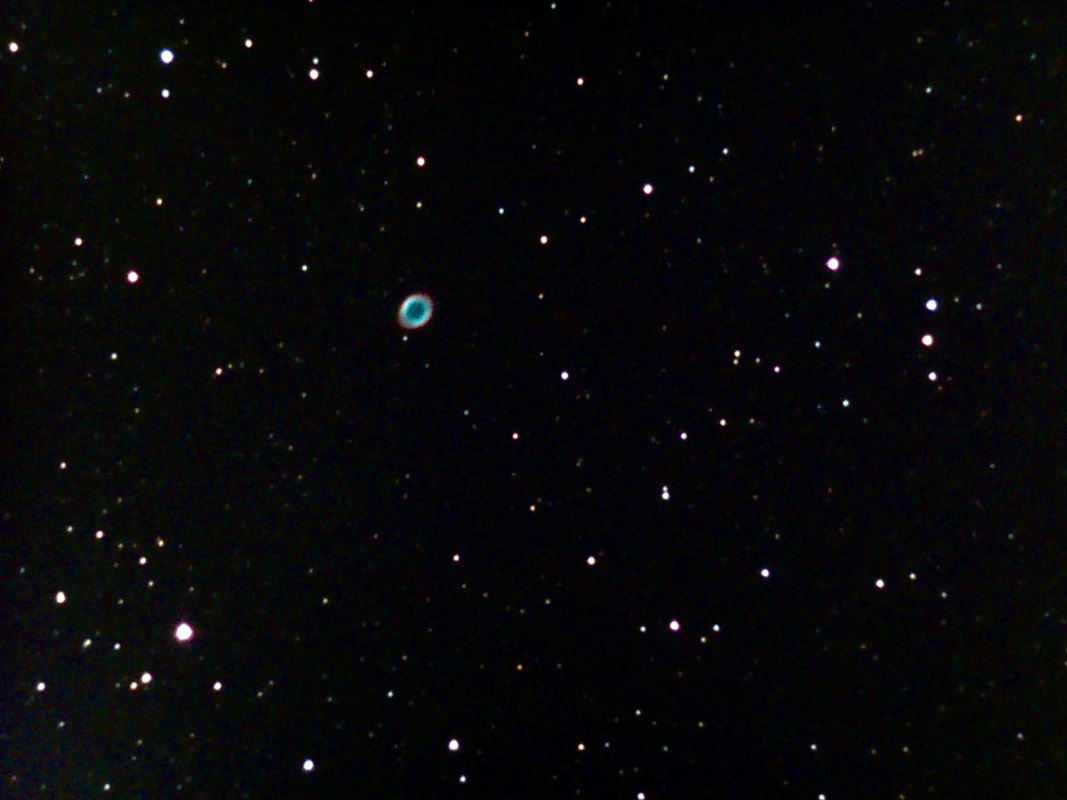|
I've written it before, but wow: Washington, DC is such a feast or famine city for amateur astronomy. We've had bad seeing on just about every clear night (and there haven't been many) for around five months now. At last, this month, the clouds parted - but on night after night, the seeing remained poor at best. I took out the Takahashi FC-100DZ twice, and both times found the seeing well below average. Both times the Moon failed to impress as it otherwise might, and stars shimmered and danced in the eyepiece. Mars had long since set; I won't have another good look at the planet until 2022. At last, at 4:30 AM on Wednesday morning I stepped out with my EVScope and found the seeing to be . . . okay? It was windy near the ground, to my great frustration, but the stars scarcely twinkled and the internet confirmed it: seeing, it seemed, was about average. Of course that doesn't matter as much as transparency when you want to observe most deep space objects, but transparency was average, too. The sky, in other words, was about as good as it's gotten since autumn. It was a little cold, however, and muddy where I set up in the park. I hoped to test the EVscope on the Ring Nebula and the Hercules cluster: two objects I admired last year with my refractors. The scope aligned itself within seconds - why can't other mounts do this? - and I soon found it to be in perfect collimation. Moments later, it had found the Ring Nebula and I began a short exposure. As I wrote last year, under urban skies the Ring Nebula looks like a ghostly grey ring with a fine four-inch refractor - a ring you can just, just make out with direct vision. Using the APM 140 with averted vision, the ring was plainly obvious. In darker skies, with a four-inch Takahashi, the ring was equally obvious and appeared a little flattened. Every time I looked, there was a visceral thrill to seeing it, with just a couple lenses between my eye and the nebula. Yet through the eyepiece, the object itself was a subtle pleasure. The experience couldn't be more different with the EVScope. That thrill of seeing something with your own eyes is just about gone. Unlike others, I really don't like looking through the scope's eyepiece; it's like looking down a barrel, for one, and at the bottom of that barrel it's clear that you're seeing a screen. Maybe I've been spoiled by fine refractors and fine eyepieces, but it's a letdown. So I look at my phone, and for the most part I wait. The experience of observing - of learning how to see - is completely lost with the EVScope. Yet the thrill of seeing deep space objects otherwise barely visible from the city beginning to resemble their true selves is simply something you can't get with a traditional telescope under an urban sky. This time I really was floored when the nebula almost immediately turned green on my screen, and then when its perimeter began to seem orange, and then when its interior started to take on a greenish hue. The breeze pushed on the tube just enough to blur some of the stars, but what a wonder. Observing the Hercules cluster was a slightly different story. The cluster is always a highlight for me, not least because it's three times older than Earth - or because we beamed a message there from Arecibo, in 1974. With one of my refractors, it looks like a smudge at first from downtown DC, but after a while the stars come out, like diamond dust on a velvet background. It's subtle - exceptionally so with one of my smaller scopes - but magical nonetheless.
Again, the experience couldn't be more different with the EVScope. Hundreds of stars are easily visible, but of course they're slightly bloated; they lack that crushed gemstone beauty that you get with a fine refractor. Many of the stars are also clearly red, a testament to their age: again, things are visible through the EVScope that just aren't accessible with a regular telescope. Is the view more impressive? Maybe not to an experienced observer, but it's different, and that's a good thing. Some complain that the EVScope delivers the same experience you might get with a much cheaper (and more unwieldy) astrophotography setup. That's just not true. The EVScope is marvelously portable, and I can set it up in about one minute. It needs virtually no time to cool down. It's a joy to use and on most nights there's no fuss at all. In half an hour I can pack up - this takes another minute - having observed at least three deep space wonders as I otherwise never could. The key point is that the EVScope delivers a fundamentally different experience than you'd get with either a traditional telescope or an astrophotography setup - and again, I view that as a very good thing.
0 Comments
Leave a Reply. |
Archives
March 2024
Categories
All
|







 RSS Feed
RSS Feed